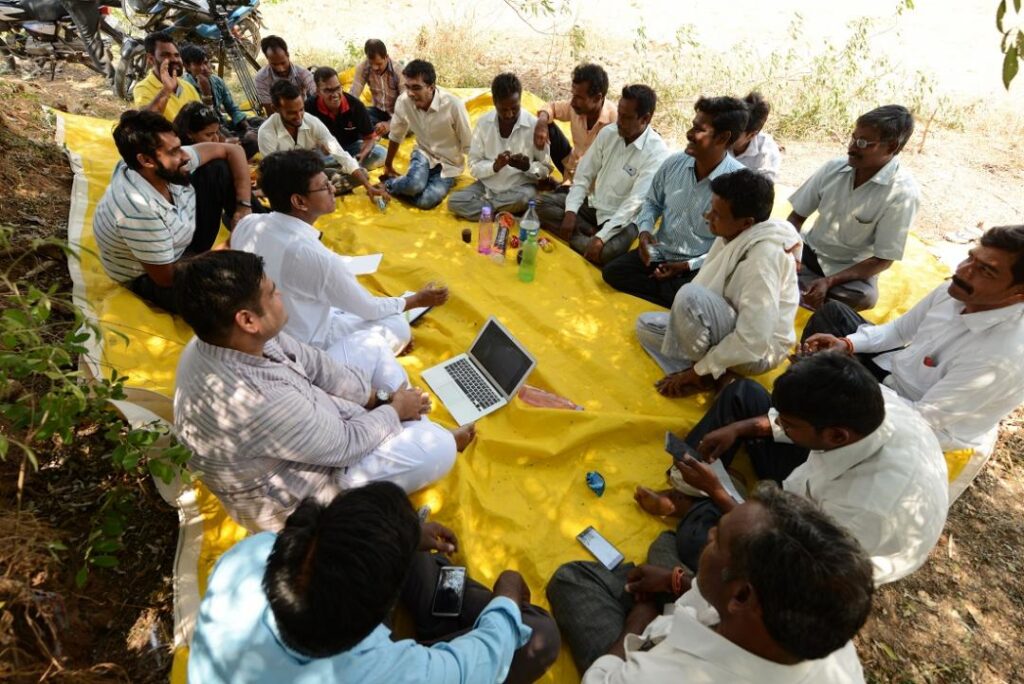Introduction
A well-structured business plan is the backbone of a successful Farmer Producer Company (FPC). Whether you’re a farmer, agri-entrepreneur, or part of an NGO working with smallholders, having a robust plan can transform a collective farming initiative into a profitable and sustainable business. This guide breaks down each essential step for creating a compelling and strategic FPC business plan.

1. Executive Summary: Define Your Vision
This is the elevator pitch for your FPC. It should capture your purpose, ambition, and the value your FPC brings to its members and market.
Mission & Vision
Be inspirational yet clear.
Example:
“Empower 200 marginal farmers in Odisha to increase their income by 30% through collective maize cultivation by 2026.”
Core Objectives
Outline specific and measurable goals such as:
- Improving market access
- Fair profit-sharing
- Ensuring environmental sustainability
- Empowering women farmers
Unique Selling Proposition (USP)
This defines what sets your FPC apart.
Example:
“India’s first FPC using blockchain technology to ensure traceability for organic turmeric exports.”
2. Market Analysis: Know Your Opportunities
Understanding your market is essential to align your FPC’s production with demand and gain a competitive edge.
Demand Assessment
Analyze both local and global markets:
- Local: Use mandi prices and crop demand.
- Export: Refer to APEDA data and export trends.
Example:
The Nashik FPC found an export opportunity for grapes to the EU by analyzing seasonal gaps.
Consumer Trends
Track shifting preferences:
- Organic and residue-free products
- Traceable and ethical sourcing
- Health and wellness-driven diets
Competitor Analysis
Map out competitors:
- Other FPCs, cooperatives, private firms
Include a SWOT analysis:
- Strengths: Farmer network, collective scale
- Weaknesses: Low digital adoption
- Opportunities: Contract farming, exports
- Threats: Market volatility, climate change
3. Operational Plan: Build Efficiency
An FPC is only as strong as its daily functioning. This section defines how your organization will operate efficiently from production to delivery.
Production Strategy
Plan what and how you will produce:
- Choose crops suited to your agro-climatic zone.
- Integrate technology (e.g., soil sensors, drones for pest control).
- Diversify with livestock or dairy.
Supply Chain Management
Ensure smooth post-harvest handling:
- Use solar-powered cold storage.
- Develop collection and packaging hubs.
- Partner with logistics platforms (e.g., Delhivery Agro, WayCool).
Key Partnerships
Strategic tie-ups boost capabilities:
- Agri-tech: Ninjacart, AgNext
- Govt Schemes: MIDH, PMFME, Rashtriya Krishi Vikas Yojana (RKVY)
4. Financial Plan: Ensure Sustainability
A clear financial blueprint not only attracts investors and grants but also builds internal confidence among members.
Revenue Streams
Plan for:
- Primary: Crop sales to institutional buyers (e.g., Reliance Fresh)
- Secondary: Value-added products (e.g., tomato puree)
- Tertiary: Non-farm income, carbon credits, or CSR funding
Cost Structure
Account for:
- Inputs: Seeds, fertilizers, pesticides
- Labor: Farming and packaging wages
- Operations: Storage, transport, electricity
- Technology: Apps, sensors, advisory tools
Funding Sources
Explore:
- NABARD loans
- PMFBY subsidies
- CSR partnerships (e.g., Tata Trusts)
Financial Projections
Build:
- A 5-year profitability plan
- ROI estimates
- A break-even analysis
- Sample Year 1 P&L
5. Risk Management: Prepare for Challenges
Every business has risks. The key is to identify them early and plan mitigation strategies.
Climate Risks
- Use weather-resilient seed varieties.
- Invest in insurance schemes like PMFBY.
Market Risks
- Diversify income (e.g., add dairy to cropping).
- Lock prices via forward contracts with buyers like ITC or BigBasket.
Operational Risks
- Conduct regular member training.
- Build MoUs with institutions (e.g., NABARD) for storage or quality infrastructure.
6. Governance and Member Engagement
Strong internal governance and active participation ensure your FPC remains democratic and accountable.
Board Structure
Define roles clearly:
- Farmer-elected board
- Rotational leadership
- Audit and ethics committee
Profit-Sharing Model
Example model:
- 70% profit to members
- 20% reinvested into operations
- 10% into a community development fund
Training Programs
Ensure capacity building through:
- Digital literacy sessions
- Training for organic certification
- Sessions on compliance and packaging for export
7. Sustainability and Social Impact
Today’s markets and funding institutions prioritize organizations aligned with ESG goals.
Environmental Initiatives
- Adopt zero-waste methods.
- Use renewable energy (e.g., solar dryers).
- Practice rainwater harvesting.
Social Responsibility
- Create women-led producer groups.
- Support education and healthcare for members’ families.
- Employ local youth as FPC staff or field coordinators.
8. Common Mistakes to Avoid
Many FPCs struggle due to avoidable pitfalls. Learn from them:
- Not allocating funds for operational emergencies.
- Ignoring regular feedback from members.
- Implementing tech tools without member training.
- Delaying statutory compliance or financial filings.
9. Conclusion
A business plan is more than a document—it’s the roadmap to rural prosperity. Begin with a pilot group, use real-time data, keep refining, and scale gradually. Tap into free resources like SFAC’s FPC toolkit or NABARD’s templates to get started.
“The best time to start an FPC was 20 years ago. The second-best time is now.”